America’s Water Infrastructure Shows Its Age — The National Debate About How to Pay for Repairs
Hundreds of billions of dollars are needed for renovation and improvement. But what projects will be chosen, and who will pay?
By Brett Walton
Circle of Blue

Early Wednesday morning, a faulty patch failed on a water main in suburban Washington, D.C., creating a sinkhole the size of a king bed that closed the road above indefinitely.
Just over a week ago, heavy rains inundated the sewer system in San Antonio, Texas. The two affected pipes spilled more than 757,000 liters (200,000 gallons) of untreated sewage into local water bodies.
And last month, tens of thousands of gallons of raw sewage poured from a ruptured pipe, slowing rush-hour traffic in Delray Beach, Florida. A water department inspection later found that sewer gases had disintegrated one-third of the 30-year-old pipe.
In ways big and small, water systems across the country are not meeting the basic obligation to provide a reliable supply of clean water. Pipes that deliver drinking water are rusting, clogging, and cracking. Reservoirs are losing storage capacity. During heavy rainstorms, sewers that combine domestic wastewater and street runoff are pouring untreated sewage into lakes, rivers, and coastal areas.
But while the effects of America’s aging and eroding plumbing and water supply system are readily apparent, what to do about it is not. Like so many of the other structural challenges confronting the United States in the early decades of the 21st century – transportation, education, energy, health care, employment – repairing the existing water delivery system and designing new and more efficient equipment and practices is riven by differing views on how infrastructure investments should be funded and which projects are priorities.
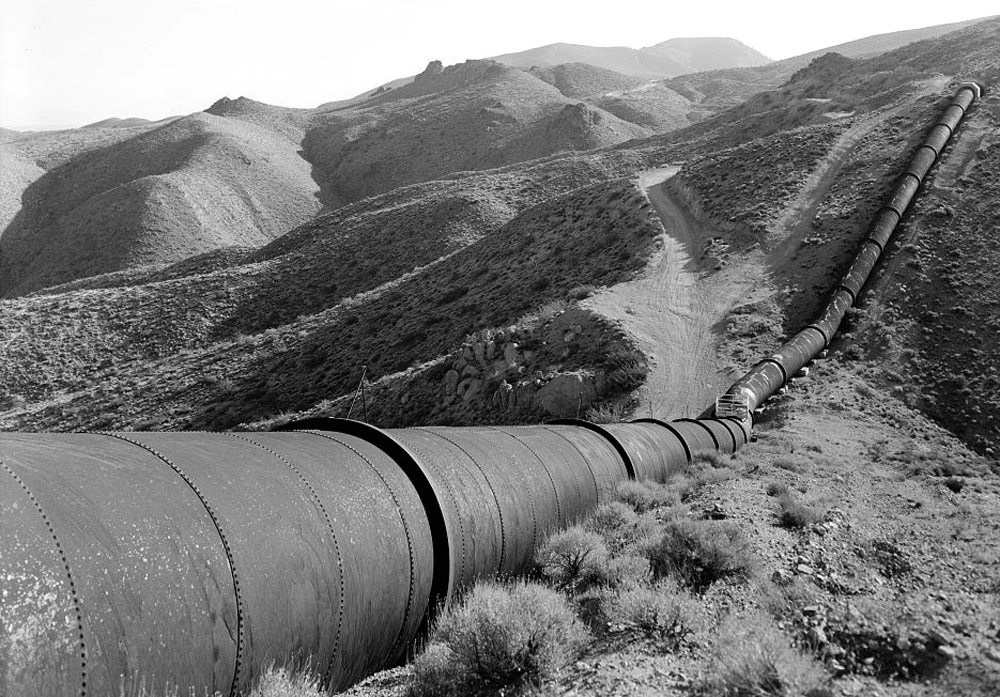
It’s not hopeless. With a sewer repair program that is more than halfway completed and a new sewer tax that is up for renewal this month, Atlanta is steadily making progress. Philadelphia is pursuing a 25-year program to reduce the amount of stormwater flowing to its treatment plant by soaking up rainfall with absorbent green roofs and more acres of green space, by planting trees, and by restoring wetlands and riparian habitats.
Still, other cities are inundated with old equipment and bad decisions. The biggest municipal bankruptcy in U.S. history occurred last November in Jefferson County, Alabama, and is tied to corruption, financial mismanagement, and poor investments in its sewer system.
Though Viewed As A “Right,” Water Is Not Free
In the United States, turning on the tap and receiving clean water is viewed as so basic to the quality of life that Americans take it for granted. They shouldn’t. The ornate steps to supply running water to virtually every household in the country represent diligent investments in reservoirs, pumps, pipes, and treatment plants that began in the 19th and early 20th centuries. Now, at the start of the 21st century, many of those systems — neglected for decades — are in need of maintenance and repairs. Though they differ on the precise figures, most assessment reports by both government agencies and interest groups agree that the bill amounts to hundreds of billions of dollars over the next two decades.
That accounting could not come at a worse time.
Debt, deficit, and disinvestment are overwhelming the political debate in most states and in Washington, D.C. Moreover, the intricacies of regulatory requirements faced by water utilities, along with the rising cost of supplies and equipment for water infrastructure, make fixing the nation’s water system even harder.
The Washington Suburban Sanitary Commission, for example, which serves nearly 2 million people in suburban Maryland, estimates that half of its 8,850-kilometer (5,500-mile) distribution system will exceed its useful life by 2025. The commission repaired 2,095 water main breaks and leaks in 2010 — between five and six per day, on average.
Here is a sampling of what communities face:
- Old pipes — some installed more than a century ago — have outlived their usefulness, resulting in an ever growing fountain of water main breaks that lose 6.4 trillion liters (1.7 trillion gallons) of water per year at a national cost of $US 2.8 billion, according to the AWWA Research Foundation. Water and sewer systems must quickly expand to accommodate growth, since the U.S. Census Bureau expects 115 million more Americans by 2050. And, as state and national water quality standards cinch ever tighter, these will require new treatment methods.
- National water quality regulations have become stricter — and thus more expensive — in the last few decades, especially since 1994, when the U.S. Environmental Protection Agency (EPA) issued its policy for controlling discharges from combined sewers. The settlements that the EPA signs with affected communities can be billions of dollars, because they often rely on expensive engineered solutions like tunnels and reservoirs. Communities, like Philadelphia, have responded by requesting more flexibility from the EPA, and environmental groups are joining them by promoting more affordable “green infrastructure” solutions that do not need pipes, filtration, or pumps. The EPA is considering these changes.
- “Green infrastructure” advocates assert that costs can be reduced and services can be improved by investing in natural systems – wetlands to cleanse water, forests to protect reservoirs, open spaces, green roofs, pavement that absorbs water — instead of large manmade structures. To handle its stormwater problems, Philadelphia’s ambitious green program replaces a treatment plant with acres of absorbent open spaces, new trees, roof-top gardens, rain barrels, and restored riverbanks. The projects are scattered across Philadelphia and improve the city’s livability, making it attractive to job seekers and businesses. Designed to capture rainwater where it falls, the project will cost at least $US 2 billion, the water department’s commissioner told ClimateWire. But that is a welcome figure compared to the $US 8 billion to $US 10 billion it would cost to get the same results with traditional “hard” infrastructure, such as treatment plants and reservoirs, which also take tens of millions of dollars annually to operate and manage.
- Funding is always a challenge. In a report released last week, the American Water Works Association (AWWA) analyzed water systems of all sizes across the country and estimated that restoring just the underground pipes will cost $US 1 trillion over the next 25 years. That figure does not include repairs to the treatment plants nor any new construction. According to the EPA, $US 633 billion is needed for capital improvements for drinking water and sewage in the U.S. alone, just to maintain current levels of service over the next two decades.
- Adapting to the warming climate is a creeping necessity that is being ignored in many places, even though it will be staggeringly expensive. The National Association of Clean Water Agencies (NACWA), a lobby group for public wastewater utilities, estimates that it will cost utilities between $US 448 billion and $US 944 billion to address climate change issues in the four decades ending in 2050. That figure is on top of the $US 633 billion estimate from the EPA for the next two decades.
- Raising rates is controversial, but usually necessary. Residents and business customers do not like water rate increases, especially at a time of economic distress. But an unwillingness to raise rates leads to underfunded systems. A task force in North Carolina’s capital city of Raleigh, for example, found that revenue from water bills does not cover the city’s maintenance costs. When sufficient funds are not available for maintenance, problems get patched instead of repaired, like the recent water main break in the suburbs of Washington, D.C.
- Population growth rates have a tremendous effect on who has to pay and how much, because such a large share of a water utility’s budget is fixed costs, or those that are needed to maintain the system and do not change with the amount of water used. Las Vegas, for instance, started building a $US 800 million pipeline to draw water from Lake Mead — the reservoir that supplies the Hoover Dam — on the assumption that fees on new development would pay for it. Now that fewer people are moving to Las Vegas, city officials are shaking more money out of existing residents by raising rates. At the same time, aging cities in the Great Lakes and Northeast regions of the country find themselves with expensive water systems, designed for a much larger population. Cities in these regions, including Detroit, which has lost 62 percent of its population since 1950, have raised rates to pay for the legacy of a rosier demographic and economic era.
These and a number of other impediments, including the rising cost of equipment and energy, have become endemic. The American Society of Civil Engineers (ASCE), which has been ringing the infrastructure alarm bell for years, titled its most recent report on the water and wastewater sectors “Failure to Act.” The report, published in December 2011, estimates a national “gap” between what is being spent and what is needed —$US 84 billion by 2020.
With federal assistance for water infrastructure declining since the 1970s, most of the money to operate and invest comes from people who use the system. The U.S. Conference of Mayors found that, in fiscal year 2005, local governments spent $US 82 billion on water/sewer services and infrastructure, which equates to 99 percent of all money that was spent on water supply and 95 percent of all money that was spent on sewers that year.
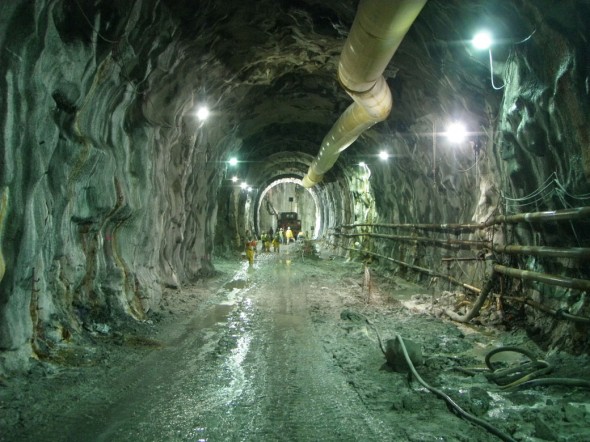
The Political Context: Feds Moving On
For at least a decade after passing the Clean Water Act in 1972, the federal government was a major investor in public water systems, providing large grants to fund sewage-treatment plants. But, starting in the 1980s, grants were phased out in favor of a significantly smaller state revolving loan program, and local governments have since taken up nearly all of the capital costs for water infrastructure.
–Michael Likosky, fellow
Institute for Public Knowledge
New York University
The Clean Water State Revolving Fund, which was authorized in 1987, and the Drinking Water State Revolving Fund, authorized in 1996, are administered by the states, which match federal allocations at 20 percent. As the money is repaid, it is loaned again. Most loans from the state revolving funds are less than $US 20 million. (In his most recent budget, which was released on February 13, President Barack Obama proposed cutting the federal loan programs by an additional 15 percent: see below.)
Those state revolving funds were a step to reduce the federal government’s responsibility for drinking water and sewers. Former U.S. Representative Jim Oberstar, a Democrat from Minnesota, has said this action was a travesty for small communities, because the “free money,” before it ran out, went mostly to cities.
Though Congress adds only a billion dollars or so to the funds each year, the programs are “necessary and vital,” Tom Curtis told Circle of Blue. Curtis is AWWA’s deputy executive director for government affairs. Since their inception, revolving funds have helped finance $US 111 billion in infrastructure projects, according to Congressional testimony in December 2011 from the director of the EPA’s office of wastewater management.
“The loan programs need continued and increased funding,” Curtis added, “but it’s hard for large projects to get funds, because the programs are not designed to accommodate them.”
As a remedy to this problem of scale, AWWA is working with Congressional staff on a water-only loan program. Modeled after an existing transportation loan program, the Water Infrastructure Finance Innovations Authority (WIFIA) is still being drafted and would provide low-interest loans, repaid at long-term U.S. Treasury rates.
Curtis would like to see Congress allocate $US 500 million to WIFIA, Because the historical rate of default is so low on water projects — roughly four projects out of 10,000, according to Fitch Ratings — WIFIA’s $US 500 million could be used to make loans in the range of $US 5 billion to $US 7.5 billion, because only the amount of money considered at risk of default is counted as a federal expenditure.
On Tuesday, representatives of local water utilities lobbied Congress at a subcommittee hearing for a draft version of the WIFIA legislation.
“WIFIA will lower the cost of capital for water utilities, while having little or no long-term effect on the federal budget,” testified Aurel Arndt, the general manager of the Lehigh County Authority in Pennsylvania.
Infrastructure Bank
Another plan to finance water infrastructure, a national infrastructure bank, is encountering a rough reception. Last summer, before a joint session of the U.S. Congress, President Obama proposed the BUILD ACT, which included a national infrastructure bank that would be a government-owned entity, operating independently of federal agencies. Its board and chief executive would be appointed by the president. The bank would be seeded with $US 10 billion in capital from the federal government, and it would be authorized to finance no more than half the costs of a selected project, which could include water, energy, and transportation.
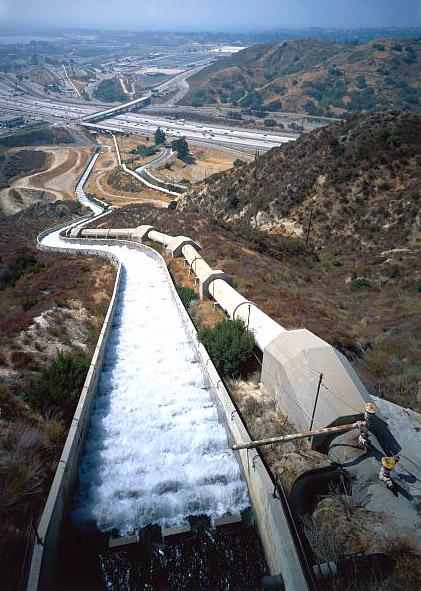
Although it would focus on large regional or national projects (those costing at least $US 100 million), the bank would designate a minimum of 5 percent of its funds for rural development. To be selected, a project — be it a road, a port, a water-treatment plant, or an energy installation — would have to generate revenue to pay back the cost of the loan.
–Adam Krantz
National Association of Clean Water Agencies
While the U.S. is one of the few industrialized nations without a national infrastructure bank, at least two-thirds of U.S. states have set up a bank to finance transportation projects. California has had an infrastructure bank since 1994, and the state is one of 33 with such an institution. The bank’s executive director, Stan Hazelroth, told Circle of Blue that clean water and drinking water are the most financed of the 16 categories of projects that his state bank considers.
Michael Likosky, a fellow at the Institute for Public Knowledge at New York University who has worked with international infrastructure banks for more than 15 years, says that the bank’s structure is designed to remove politics from the decision-making process and instead emphasize a project’s performance.
“Water is one of the areas with the greatest amount of need,” Likosky told Circle of Blue. “It is easier politically to do a water project than, say, transport.”

But the proposed bank was called “dead on arrival” by the Republican chairman of the House Transportation and Infrastructure Committee. And representatives of large nonpartisan national water associations also are skeptical.
Neither the American Water Works Association (AWWA), an organization for water-sector professionals, nor the National Association of Clean Water Agencies (NACWA), which represents public wastewater utilities, thinks that water projects should be lumped with roads, harbors, and transmission lines.
“The response from our members has been against the bank,” said Adam Krantz, NACWA’s managing director for government and public affairs. “We’d have to compete against transport and energy, and it’s not enough money. We’d rather the government fully support existing programs and put more money in the state revolving funds.”
Private Sector and Public Tax
The last group vital to solving water infrastructure needs is the private sector, as companies are looking to play a larger role. Public-private partnerships, as they are called, can take many forms — from outsourcing management and operations to a lease agreement to a contract for building and operating a facility, eventually transferring ownership completely to the local government.
“The traditional solution of creating more public debt to address capital improvements is not the long-term answer,” said John Flaherty, an infrastructure team member for The Carlyle Group, a global investment firm, in an interview with Circle of Blue. “The problem is too big.”
Knowing they are essentially on their own, some cities are using special taxes or fees in tandem with unpopular rate increases. In 2004, Atlanta voters, for instance, approved a 1 percent sales tax that would benefit water infrastructure projects. Just last week, a Utah House committee moved forward a similar bill to pay for a water pipeline from Lake Powell, a reservoir on the Colorado River, to high-growth communities in the state’s southwest corner.
Most water agencies, though, are issuing more debt and looking for ways to make borrowing cheaper. In last November’s election, for example, Texas voters approved an initiative to allow the state water board to increase its borrowing authority from $US 1.7 billion to $US 6 billion, a move that will let local water departments piggyback onto the state’s superior credit rating, so that they can finance projects at a lower rate.
It’s not a cure-all — but in an age of old infrastructure and new demands — any bit of medicine helps.
Correction: The statistic on the volume of water lost each year in the U.S. because of pipe leaks was incorrectly attributed to the U.S. Geological Survey. The figure was in a report from the AWWA Research Foundation.
The image of Kearney, Nebraska is courtesy of the Nebraska State Historical Society. For more stories and photographs of Nebraska history, visit nebraska.org.
Brett writes about agriculture, energy, infrastructure, and the politics and economics of water in the United States. He also writes the Federal Water Tap, Circle of Blue’s weekly digest of U.S. government water news. He is the winner of two Society of Environmental Journalists reporting awards, one of the top honors in American environmental journalism: first place for explanatory reporting for a series on septic system pollution in the United States(2016) and third place for beat reporting in a small market (2014). He received the Sierra Club’s Distinguished Service Award in 2018. Brett lives in Seattle, where he hikes the mountains and bakes pies. Contact Brett Walton



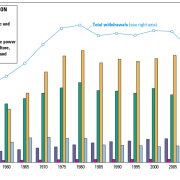
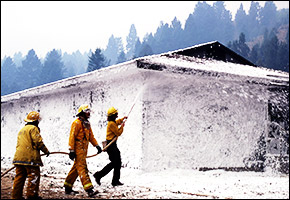
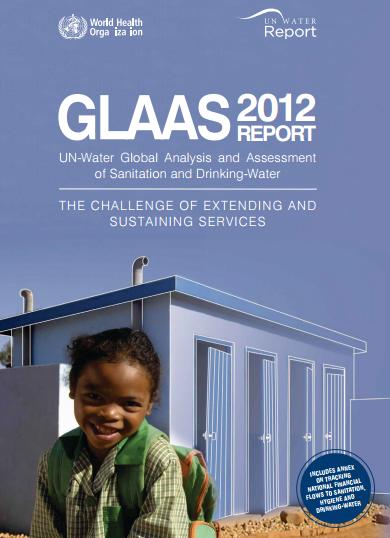



Hello Brett,
Thank you for your very good article on water infrastructure needs in the U.S. I would respectfully like to point out, however, that the oft-repeated figure of 1.7 trillion gallons of water lost annually through leaking pipes, at a national cost of $2.6 billion, did not originate with the USGS. I believe that the origin of these figures is a 1994 AWWA Research Foundation report (Kirmeyer and others), which used survey results to estimate the average percent of inadvertent system losses for utilities and then computed the value of lost water nationally, based on an average cost per 1,000 gallons. Along the way, these figures seem to have been altered slightly and associated with our USGS estimates of public supply withdrawals and deliveries to subsequent uses. The USGS National Water Use Information Program does not attempt to identify amounts of water lost through system leaks, or to assign a dollar value to that quantity.
Thanks Brett! I enjoy reading your posts.
Joan Kenny
Hydrologist
USGS